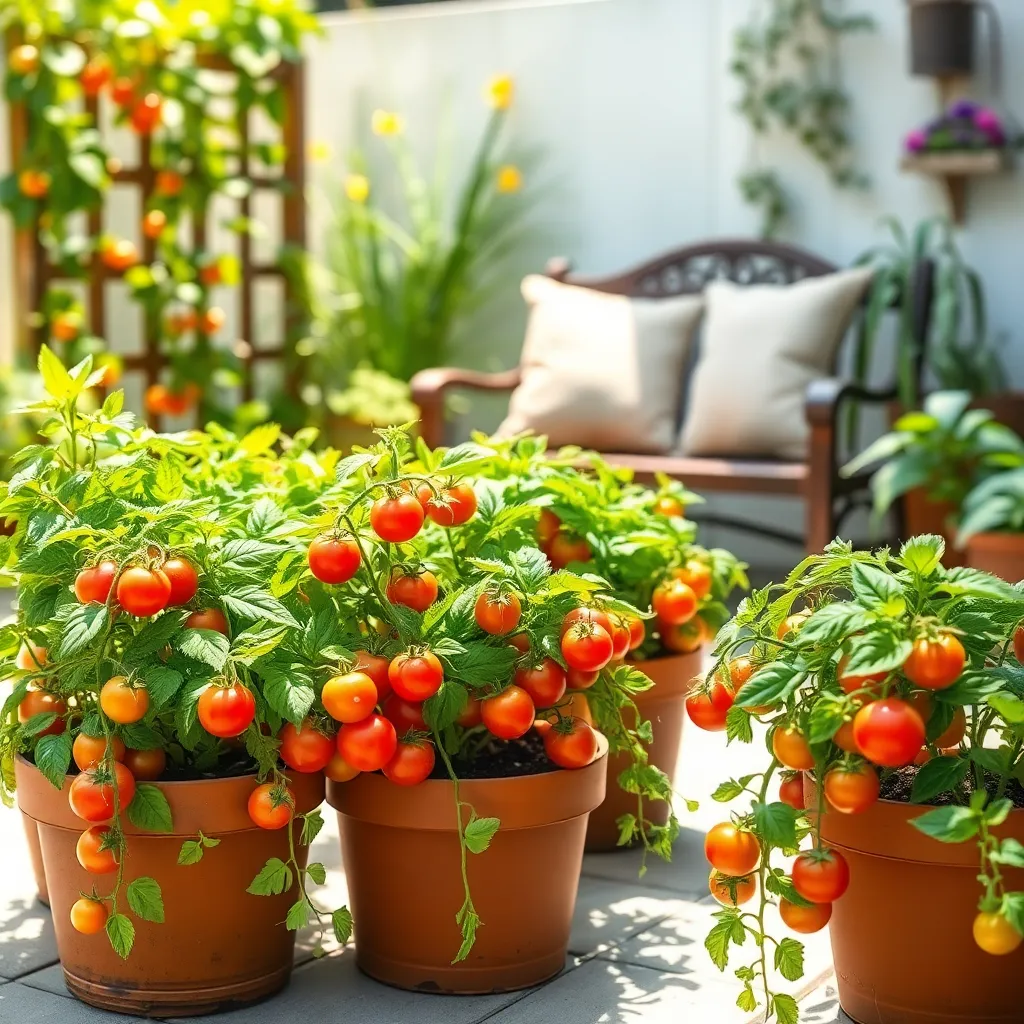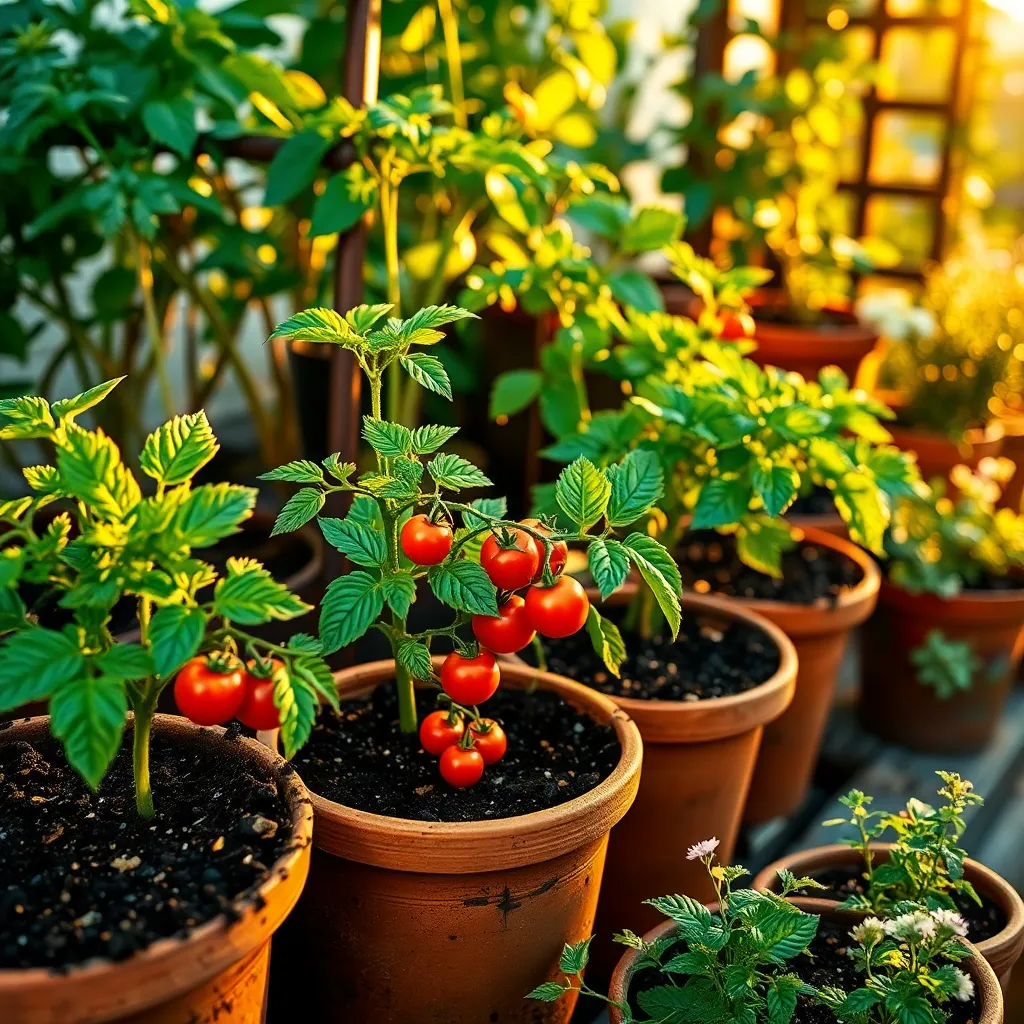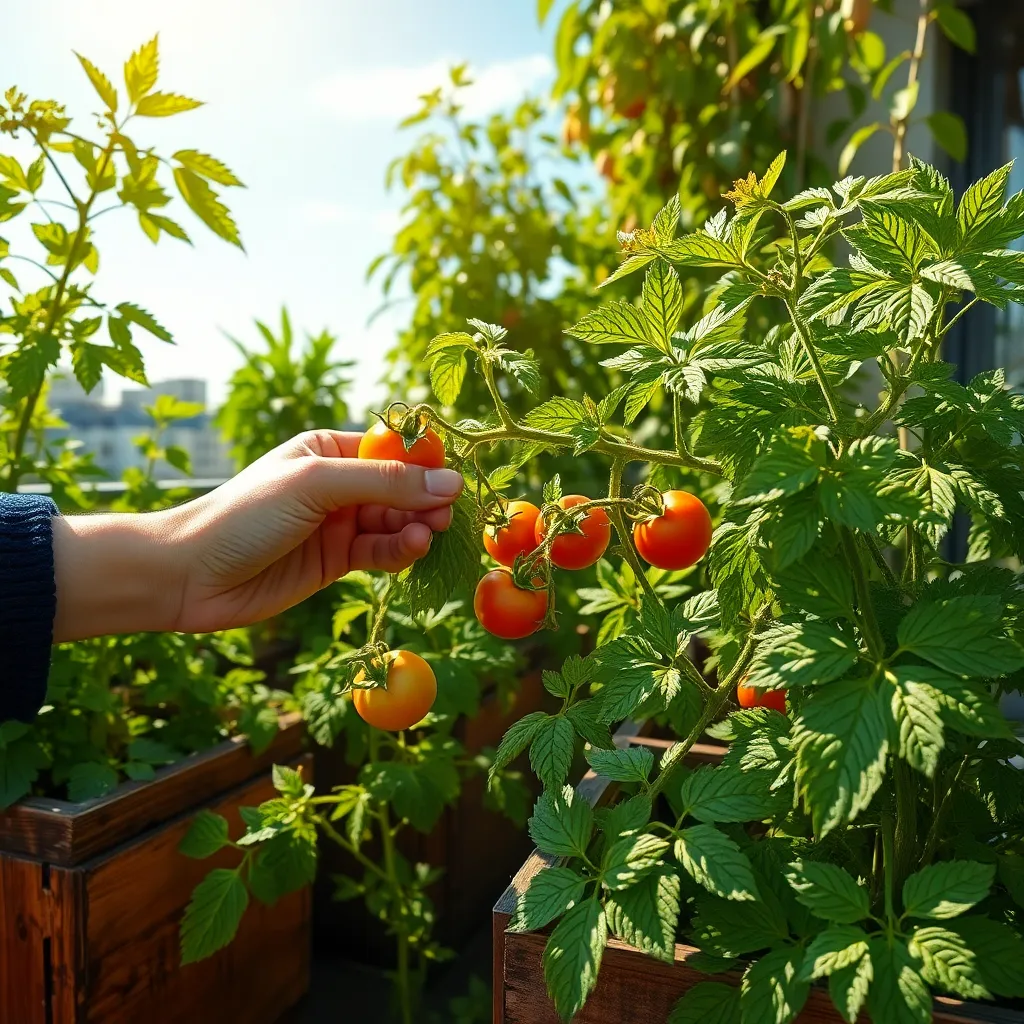There’s something undeniably magical about nurturing a tomato plant from seed to harvest, watching as it transforms from a tiny sprout into a lush, fruit-laden vine. For those with limited space, the idea of growing juicy tomatoes might seem daunting, but today we’re here to show you that even the smallest of spaces can yield a bountiful crop. Whether you’re tending to a cozy balcony garden or maximizing the potential of a compact patio, growing tomatoes in small spaces is not only possible but incredibly rewarding.
For the seasoned gardener looking to explore new techniques or the novice just starting your green journey, this guide will offer insights tailored to your level of expertise. By the end of this article, you’ll be equipped with practical tips on selecting the right tomato varieties, understanding the nuances of container gardening, and mastering the art of optimizing light and soil conditions. We understand that every gardener’s situation is unique, which is why we’ll also delve into creative solutions for common small-space challenges, ensuring your tomato plants thrive regardless of your constraints.
As you embark on this tomato-growing adventure, you’ll discover that patience and attention to detail are your greatest allies. Our step-by-step instructions and expert advice are designed to inspire confidence, empowering you to create a lush, productive garden in even the tiniest of spaces. Together, let’s transform your limited area into a vibrant oasis, proving that with the right approach and a little bit of care, a plentiful tomato harvest is within everyone’s reach.
Choose Compact Tomato Varieties

When growing tomatoes in small spaces, selecting the right variety is crucial. Compact tomato varieties, also known as determinate or bush tomatoes, are ideal because they grow to a manageable height and do not require extensive staking.
Consider varieties like ‘Patio Princess’, ‘Tiny Tim’, or ‘Bush Early Girl’, which are specifically bred for small spaces. These plants generally grow about 2 to 3 feet tall, making them perfect for container gardening or small garden beds.
It’s important to use a quality potting mix that retains moisture yet provides good drainage. A mix that includes peat moss, perlite, and a slow-release fertilizer can help ensure your compact tomatoes have the nutrients they need.
Watering is key to healthy tomato plants, especially in containers where soil can dry out quickly. Aim to keep the soil consistently moist but not waterlogged, and use deep watering techniques to encourage strong root development.
For those looking to maximize yield, consider applying a balanced liquid fertilizer every two weeks once the plants begin to flower. This can help promote robust growth and a bountiful harvest, even in limited space.
Select Suitable Containers

When growing tomatoes in small spaces, selecting the right container is crucial for success. Choose containers that are at least 12 inches deep and wide to provide ample room for root development.
For beginner gardeners, lightweight plastic or resin pots are a great option because they are easy to move and manage. Ensure your containers have drainage holes to prevent waterlogging, which can lead to root rot.
Experienced gardeners might consider using self-watering containers, which help maintain consistent soil moisture. These systems can be particularly useful in hot climates or for those with busy schedules.
Regardless of the material, select containers with a light color to reflect sunlight and keep the roots cooler. Dark-colored containers absorb heat, which can stress tomato plants in warm weather.
Fill your chosen container with a high-quality potting mix that is rich in organic matter. Avoid using garden soil as it can compact in containers and may harbor pests and diseases.
Consider adding slow-release fertilizer to your potting mix to provide nutrients throughout the growing season. This step will help ensure your tomato plants remain healthy and productive.
Use High-Quality Potting Mix

To grow tomatoes successfully in small spaces, using a high-quality potting mix is essential. Choose a potting mix that is specifically designed for vegetables, as these mixes are formulated to support healthy plant growth and provide the nutrients tomatoes need.
Quality potting mixes are typically lightweight and well-aerated, which is crucial for container gardening. A good mix will retain moisture while allowing excess water to drain away, preventing root rot and other common issues associated with overwatering in small spaces.
When selecting your potting mix, look for one that contains ingredients like peat moss, perlite, and vermiculite. These components help maintain the right balance of moisture and air, which is vital for the roots of your tomato plants to breathe and thrive.
For gardeners looking to enhance their potting mix, consider adding organic matter like compost or worm castings. This will enrich the soil with additional nutrients, promoting robust growth and improving the flavor of your tomatoes.
Ensure Adequate Sunlight Exposure

To ensure your tomatoes thrive in small spaces, it’s crucial they receive adequate sunlight exposure. Tomatoes require at least six to eight hours of direct sunlight daily for optimal growth and fruit production.
Position your containers in the sunniest spot available, such as a south-facing balcony or patio. If natural light is limited, consider using grow lights to supplement their exposure, ensuring they receive the necessary light spectrum for photosynthesis.
Rotate your containers every few days to ensure all sides of the plant get equal sunlight. This practice helps prevent uneven growth and encourages a robust and symmetrical plant structure.
For those with limited outdoor space, consider using reflective surfaces like mirrors or white walls to amplify the available light. These simple adjustments can significantly boost the light intensity your plants receive, promoting healthier growth.
Implement Regular Pruning Techniques

Pruning is an essential practice when growing tomatoes in small spaces, as it helps manage plant size and encourages healthy growth. By regularly removing unnecessary growth, such as suckers that emerge between the main stem and branches, you can focus the plant’s energy on producing quality fruit.
To begin, it’s critical to use clean, sharp tools to avoid damaging the plant or spreading disease. Sanitize your pruners before each use by wiping them with alcohol or a diluted bleach solution to minimize the risk of infection.
When you identify a sucker, pinch it off with your fingers or snip it with pruners when it is small, ideally under four inches. This practice not only keeps the plant tidy but also improves air circulation, reducing the likelihood of fungal diseases.
Advanced gardeners might consider more aggressive pruning techniques, such as removing lower leaves that touch the ground, which can help prevent soil-borne pathogens. Remember to prune consistently throughout the growing season to maintain plant health and maximize yield in restricted spaces.
Conclusion: Growing Success with These Plants
In nurturing successful relationships, much like growing tomatoes in small spaces, a little creativity and care go a long way. First, we explored the importance of communication, akin to ensuring your plants have the right light. Next, we delved into setting boundaries, as vital as proper pruning for healthy growth. Third, we emphasized the need for patience, mirroring the gradual ripening of fruit. Fourth, we highlighted the benefits of regular maintenance, similar to consistent watering and fertilizing. Finally, we discussed adaptability, crucial in both relationships and adjusting to changing weather conditions.
As your actionable next step, take a moment today to express appreciation to your partner or loved one, cultivating gratitude like you would enrich soil.
Remember, relationships thrive with ongoing attention and love. Bookmark this article as a handy guide to revisit these nurturing principles. Just as each tomato plant can yield a bountiful harvest, so too can your relationships flourish with commitment and care. Together, let’s sow the seeds of enduring happiness and watch them grow into a future filled with love and understanding.

